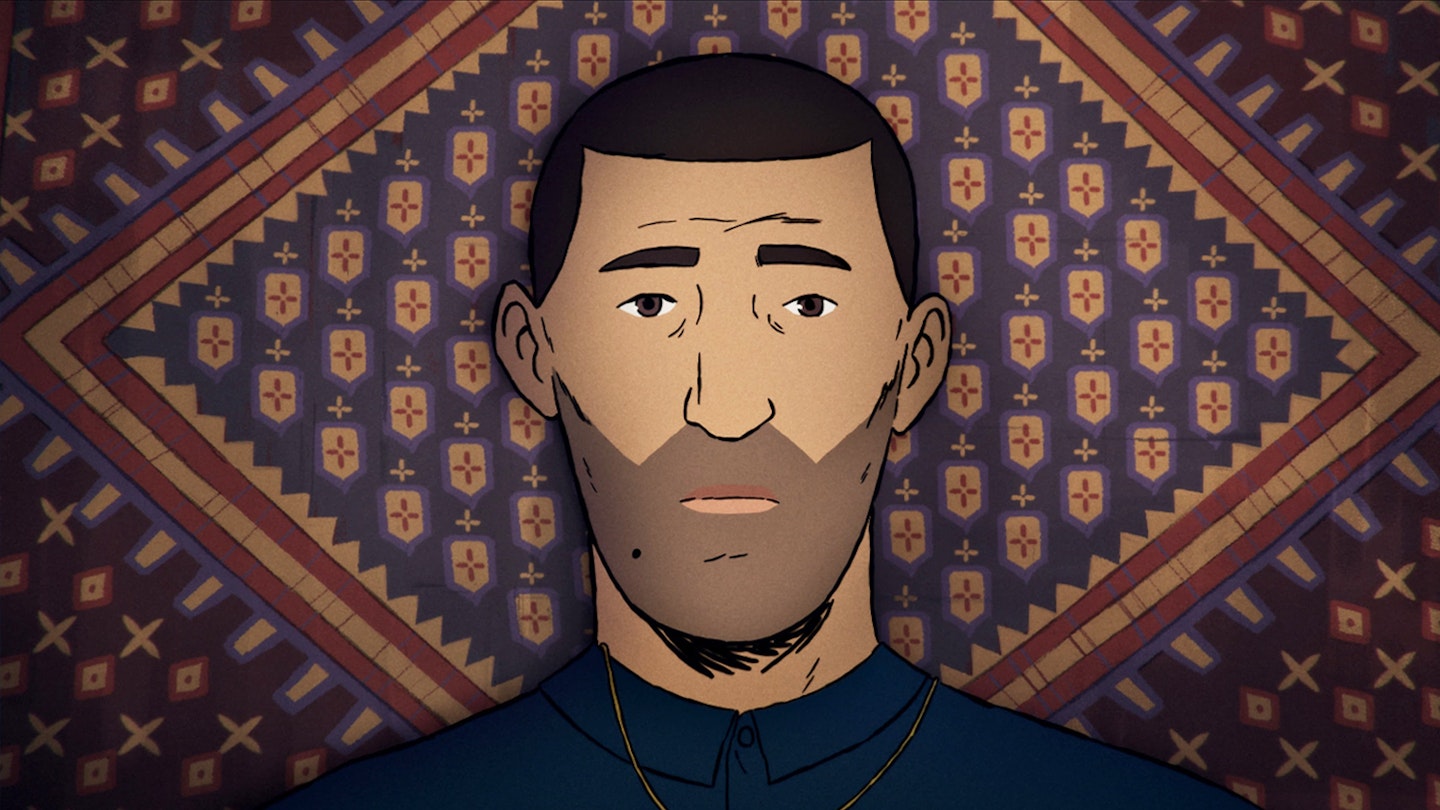Refugee stories have a tragic, crushing universality about them: dank cargo-holds and shipping containers, thuggish human traffickers, the desperation of families torn apart by war and persecution. But in the telling of one such story — that of Amin Nawabi (Daniel Karimyar, Fardin Mijdzadeh), an Afghan academic settled in Denmark but still shaken by the escape he made during his teenage years — documentary filmmaker Jonas Poher Rasmussen has somehow found a way inside these horrors that’s truly unique. Flee jolts to life via swirling hand-drawn animation, which is not what you’d expect. It’s also a memory play, a therapy session and, most subtly, a coming-out comedy. Unspooling like a hush of secrets about to be disclosed after decades, Flee is a stirring, haunted reminiscence like no other.

Amin, by the way, isn’t his real name. That’s been changed, along with his facial features, to protect him from a vengeance that will become clear. While non-kiddie animations like Waltz With Bashir and Richard Linklater’s Waking Life may come to mind, Flee shares a deeper kinship with David France’s recent deepfake-assisted Welcome To Chechnya, another refugee documentary that uses unconventional methods to pursue an activist truth. Rasmussen, a Danish school friend of Amin who convinced him to finally unburden his past, transforms his subject’s words into vibrantly styled episodes, some euphoric: Amin’s blissed-out boyhood in Kabul — running wild in neon-pink headphones and his sister’s dress — is scored to A-ha’s ‘Take On Me’, the film’s pencil-sketch-style animation popping its collar with the same dynamic brio of Steve Barron’s classic video.
Flee is the complex heartbreaker our current immigration crisis demands.
But with the rise of the Mujahideen, a sweat-soaked rootlessness takes hold, compelling his family to take flight to a depressing post-Soviet-era apartment in Moscow. It gets worse from there. As Amin’s tale grows darker and more unsparing, Flee’s animation keeps step for step with him: a nightmarish forest border-crossing takes on a windy, inky, blurred kineticism that’s pure panic (a bit like when Frodo puts on his ring). The decisions made by escaping families during these moments are heartbreaking, yet they don’t have time to slow down and think. Evoking this tension, Uno Helmersson’s orchestral score makes room for a keening violin solo, struggling for balance above the fray. The player is Mari Samuelsen, who seems to understand the film on a deep level.
Meanwhile, a gay identity is busy being forged. Young Amin gazes longingly at Jean-Claude Van Damme on a poster for Bloodsport, and it’s just the laugh we need. Later, a final, climactic plane-ride with another teenage boy has the charge of a secret date. Rasmussen has the confidence to crosscut his re-creations with scenes of the grown-up Amin, comfortably out and house-hunting with his boyfriend Kasper but detached from their quest for a home. Can stability be as easy as making a down payment? Never for Amin, and Flee, in its refusal to simplify his trauma or turn it into something purely triumphant, is the complex heartbreaker our current immigration crisis demands.
